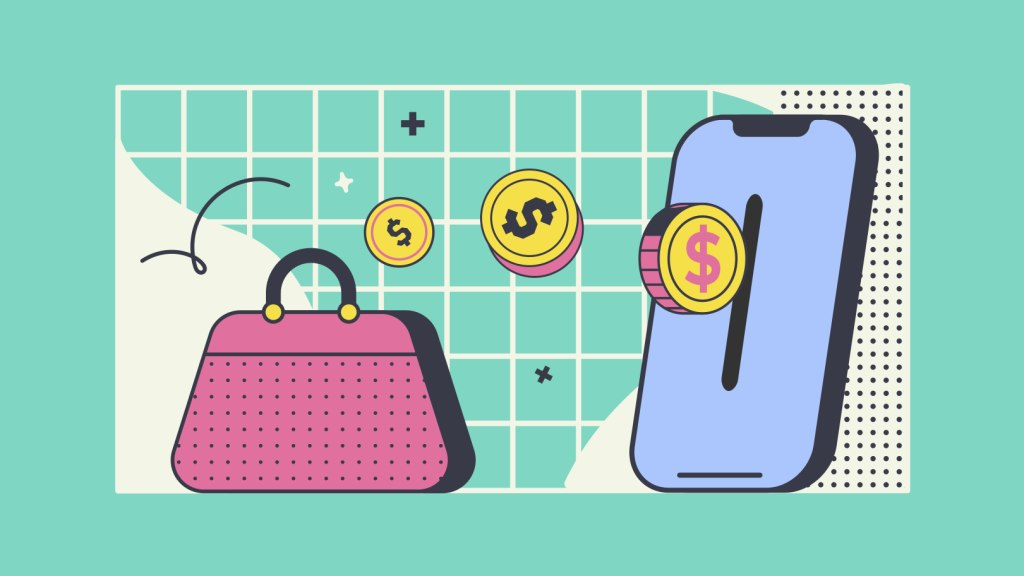The area that has the most significant impact is UXD (User Experience Design), but an effective UX (User Experience) isn’t something that happens by chance; it’s the result of careful planning and cultivation. Once you correctly measure your UX budget, you’ll discover that investing in UX provides one of the best ROI (Return on Investments) in business.
How UXD Achieves Business Goals
UXD is valuable at every stage of a design process, but it’s most effective when it’s prioritized from the start. That’s because it creates a quantifiable framework for decision making, ensuring that you’re solving the right problems for your users, saving wasted development time, and allowing you to start converting sooner.
An effective UX drives conversions in two ways: macro-conversions and micro-conversions.
Macro-Conversions
Macro-conversions are the most straightforward conversions to understand because they can be expressed in clear business terms.
When someone in a meeting says, “we need more…” They’re talking about macro-conversions.
The vast majority of the time, a macro-conversion is a sale. For example, if you sell motorbikes and a customer buys a motorbike, that is one macro-conversion. Likewise, if you run a SaaS (Software as a Service) and someone signs up for an account, that is one macro-conversion.
Macro-conversions are what business people focus on, they’re the ultimate aim, but they’re all but ignored by experienced UX professionals because there’s a much more important metric…

Micro-Conversions
Micro-conversions are little wins through a UX design. Each time a user visits a page on your website, that’s a micro-conversion. Each time a user clicks a button, reads some text, or taps a link, that’s a micro-conversion. Virtually anything a user does to engage with your site is a micro-conversion.
Micro-conversions have no inherent value in and of themselves, but when they are combined, they contribute to macro-conversions.
You may have heard the expression, “If you take care of the cents, the dollars will take care of themselves.” And so it is with micro and macro-conversions; if you focus on micro-conversions, the macro-conversions will follow.
Often we find that websites fail by the slightest of margins. If you miss a target by just 0.1%, you have still missed the target. In the highly-competitive environment of the web ‘almost’ isn’t good enough. A skilled UX professional can improve your micro-conversions, finding that extra 0.1% (and more), thereby delivering macro-conversions.
That’s why even very slight refinements to a design can lead to a radical improvement in ROI.
How to Measure the ROI of UXD
Both macro and micro-conversions can easily be tracked, making UX one of the few quantifiable areas of design.
Your website’s KPIs (Key Performance Indicator) measure how well the site achieves your goals. For example, if your primary business goal is to acquire new business, one of your KPIs might be the number of new accounts.
It is vital that you identify the most suitable KPI to measure the effectiveness of your UX accurately.
Literal ROI
Literal ROI refers to the amount of money you make. This is the most straightforward ROI to measure; for every dollar you spend, you make two dollars. In fact, it has been suggested that every dollar invested in UX actually returns between ten and a hundred dollars.
Ecommerce usually is one of the more challenging areas of the web to succeed in, but on this point, ecommerce sites have it relatively easy.
There are many different ways of gauging finances, from the lifetime value of an individual customer to the growth rate, but in simplistic terms, literal ROI is one of two things: increased revenue or decreased costs.
Abstract ROI
Abstract ROI means a benefit that is difficult to quantify in simple numbers. For example, imagine an environmental charity that’s goal is to educate people about climate change. How can you measure increased awareness or a change in political views?
The only way to measure abstract ROI is through strategic testing and carefully selected KPIs.
In the case of our fictional climate change charity, intensive face-to-face testing early in the design phase will establish whether the content clearly communicates the message. If those tests prove a 75% chance of a user understanding and retaining the message, then we can track the number of users who consume the content and multiply it by 0.75 to determine an ROI percentage.
Abstract ROI is specific to every project, and it needs to be strategically tested by UX professionals in collaboration with stakeholders to maximize the UX.
Ambient ROI
Ambient ROI refers to benefits perceived as side-effects of good UX, although in reality, those benefits are hard-won through careful design choices.
Ambient ROI covers areas such as brand perception, discoverability, and efficiency. It actively supports a website or app’s broader goals by reducing support requests, reducing abandonment, and encouraging brand engagement.
Ambient ROI is often under-evaluated, but its broad nature means it usually makes up the majority of UX gains when actively tracked.

How Much is UX Worth to Your Business?
The ROI of UX can be a highly specific calculation to make; every organization will have different challenges and different business priorities.
Calculating UX ROI is relatively simple for literal ROIs. A UX professional with testing experience is needed for abstract and ambient ROIs. A KPI must be measured, changes carried out, and the KPI remeasured. You can then calculate an ROI percentage with a simple equation: (new score – old score) / old score.
One thing that is incontestable, and backed by years of research, is that companies that invest in UX design outperform those that don’t.
UX isn’t just about giving users a better experience; it’s also a smart business investment.
